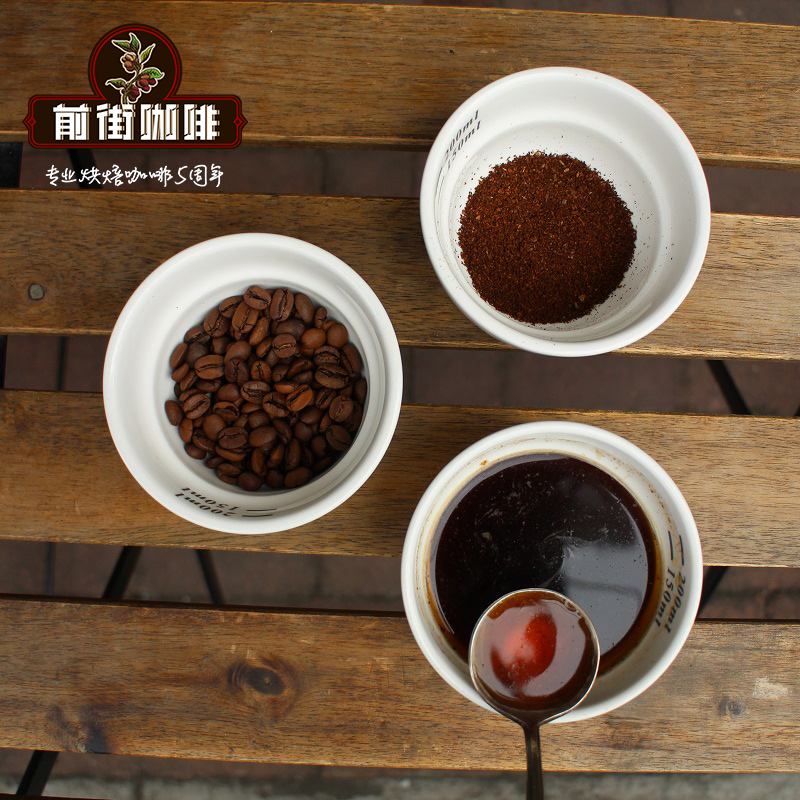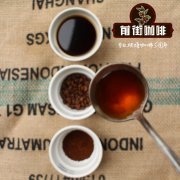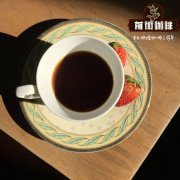How many coffee producing areas are there in Java, Indonesia? How does Indonesian Java coffee taste? Java claw coffee

Professional coffee knowledge exchange more coffee bean information please follow the coffee workshop (Wechat official account cafe_style)
How many coffee producing areas are there in Java, Indonesia? How does Indonesian Java coffee taste? What is the variety of Java Java coffee?
85% of Java coffee is produced in complex volcanoes near Ijen in the east of Java. The range of heights suitable for coffee production is 3000 to 6000 feet, while Java Arabica coffee is concentrated on the Ijen plateau, at the eastern end of Java, at a height of more than 1,400 meters.
Java coffee was brought to Indonesia by the Dutch in about 1696 and has been cultivated for more than 300 years. In the late 1880s, a rust spot spread like a plague in the Sukabumi area, destroying most coffee plantations. At that time, the Dutch replaced Arabica with Liberica (Liberika, a tough, but not very tasty coffee), and then changed to Robusta (Robesda), which was highly productive and could be cultivated at low and middle elevations with strong disease resistance, until the Java authorities successfully restored the Arabica tree species. At this time, the center of gravity of Java coffee was slowly transplanted from eastern Java to the present central region. Compared to the total number of Robusta, the Arabica in Java is only a small amount. The five major producing areas are Blawan (also spelled Belawan or Blauan), Jampit (or Djampit), Pancoer (or Pancur), Kayumas and Tugosari, covering an area of more than 4000 square meters.
Java coffee is all treated with wet planing. Java coffee is a special coffee, it has the rich and concentrated characteristics of Asian coffee, but it does not have the common earthy smell and damp musty smell of Sumatra, Sulawesi and Bali coffee. The acidity is delicate, with natural aromas of herbs and spices, with a hint of sorghum, sweet grain and syrup, and a hint of tobacco, sometimes with subtle herbal notes in the aftertaste.
Drinking Java coffee can best experience the artistic conception of bitterness. All coffee can feel bitter only in the first few mouthfuls, and will no longer feel bitter after the mouth has adapted to that slight bitterness. Java coffee is sweet with bitterness, and every mouthful of bitterness is clear, and the return sweet is deeper and stronger than any coffee. However, Java coffee is also unstable because of the drying part and storage conditions in the process of raw bean processing, so not all Java coffee beans can have the flavor performance described above.
Flavor: the only recognized perfect blend bean in the world is made of Java coffee mixed with the best Yemeni mocha coffee. Long before Java was infected with the rust spot, Java beans, with its unique flavor and Yemeni mocha coffee, was praised as the perfect combination of the most complete and fast matching flavor, red wine-like aroma, brewing-like mellow, fine fruit acid, with fructose-like fruit aroma, and pure throat rhyme, is an unforgettable memory for all who have drunk it. Although after a devastating disaster, the taste of Mocha Java is not as impressive as before, as long as it comes to blended coffee, the world all recommend the matching of Mocha Java, which proves the extent to which they are cherished!
A small number of aged coffee beans are made in Java. First, the raw beans are exposed to warm, moist air during the rainy season, and then stored for 2-3 years to age them. The color of the raw beans will change from green to light brown, and the taste will increase the concentration and consistency when the acidity is lost. These old coffees are called Old Government, Old Brown or Old Java.
Java is also a source of kopi luwak (Nuwak commonly known as civet coffee) and is the most expensive coffee in the world. Through the feeding of civets (also known as civet cats) and the baptism of gastrointestinal juices, the super coffee is unparalleled in the world. because of its rare production and special production process, it has become the most expensive and special coffee in the world. The coffee beans produced in Java, Sumatra and Sulawesi, especially Java, are beans called W, I, B, which are a little round. They are the highest grade of Robusta varieties and are very suitable for making mixed coffee, so they are widely used.
Qianjie recommended cooking:
Filter cup: Hario V60
Water temperature: 88 degrees
Degree of grinding: small Fuji degree of grinding 4
Cooking methods: the ratio of water to powder is 1:15, 15g powder, the first injection of 25g water, 25 s steaming, the second injection to 120g water cut off, waiting for the powder bed water to half and then water injection, slow water injection until 225g water, extraction time about 2:00
Analysis: using three-stage brewing to clarify the flavor of the front, middle and back of the coffee. Because V60 has many ribs and the drainage speed is fast, it can prolong the extraction time when the water is cut off.
Important Notice :
前街咖啡 FrontStreet Coffee has moved to new addredd:
FrontStreet Coffee Address: 315,Donghua East Road,GuangZhou
Tel:020 38364473
- Prev

What's the flavor of Sumatra Indonesian Java coffee beans? How is the story of Java coffee growing history
Professional coffee knowledge exchange more coffee bean information please follow the coffee workshop (Wechat official account cafe_style) what is the flavor of coffee beans in Sumatra, Java, Indonesia? What is the story of Java coffee growing history? The common coffee in Indonesia can be divided into three kinds: Sumatra Mantenin, Sulawesi Tonaga, Java and civet coffee. Sumatra, Sumatra
- Next

[Indonesian Java variety] what is the flavor of washed coffee beans at java Frinza Manor in Java? Java coffee
Professional coffee knowledge exchange more coffee bean information please follow the coffee workshop (Wechat official account cafe_style) [Indonesian Java variety] Java java Flynn Manor washed coffee bean flavor? What are the taste characteristics and hand-brewing methods of Java coffee? Wildan Mustof is the owner of the manor. In 2010, he and his wife Atieq first went to Sindangkerta Weninggalih.
Related
- Detailed explanation of Jadeite planting Land in Panamanian Jadeite Manor introduction to the grading system of Jadeite competitive bidding, Red bid, Green bid and Rose Summer
- Story of Coffee planting in Brenka region of Costa Rica Stonehenge Manor anaerobic heavy honey treatment of flavor mouth
- What's on the barrel of Blue Mountain Coffee beans?
- Can American coffee also pull flowers? How to use hot American style to pull out a good-looking pattern?
- Can you make a cold extract with coffee beans? What is the right proportion for cold-extracted coffee formula?
- Indonesian PWN Gold Mandrine Coffee Origin Features Flavor How to Chong? Mandolin coffee is American.
- A brief introduction to the flavor characteristics of Brazilian yellow bourbon coffee beans
- What is the effect of different water quality on the flavor of cold-extracted coffee? What kind of water is best for brewing coffee?
- Why do you think of Rose Summer whenever you mention Panamanian coffee?
- Introduction to the characteristics of authentic blue mountain coffee bean producing areas? What is the CIB Coffee Authority in Jamaica?

